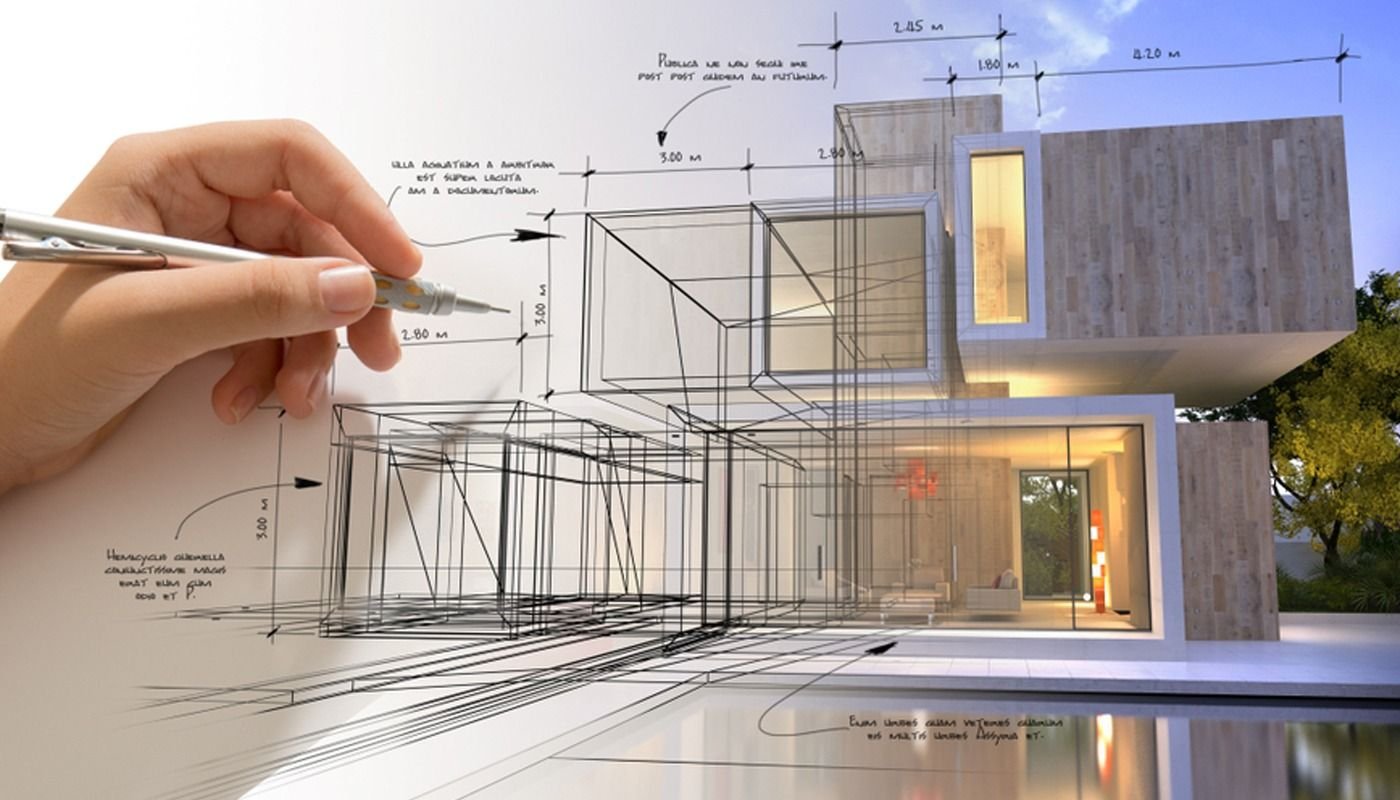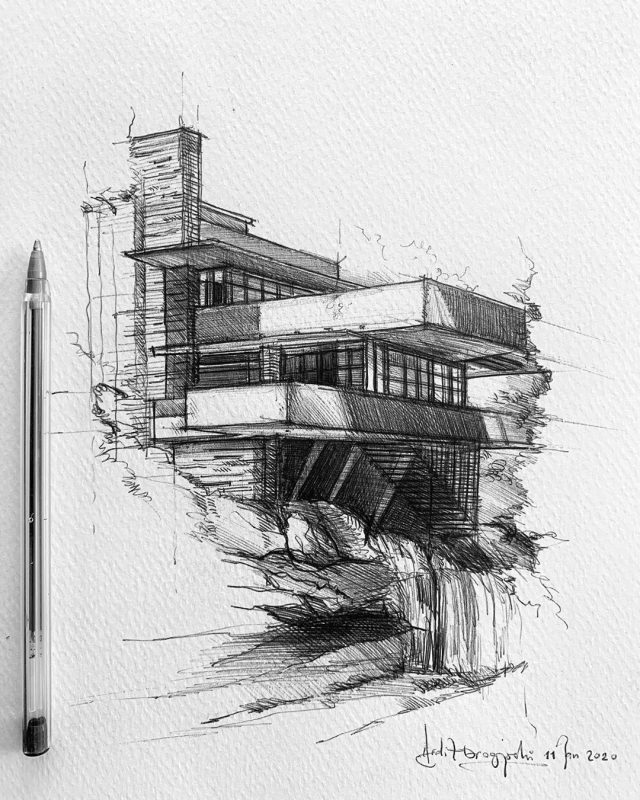
Architectural Sketching:10 Architecture Sketching Tips
✏️ Architectural Sketching: 10 Architecture Sketching Tips
By ACCO Construction – Architecture & Design Experts in Pakistan
🏛️ Introduction to Architectural Sketching
Architectural sketching is the heartbeat of creative design. It’s the most fundamental skill an architect or designer must master. Sketching allows architects to visualize concepts, brainstorm ideas, and communicate design language before digital tools take over.
At ACCO Construction, our design team begins every project with hand sketches—transforming concepts into reality through lines, forms, and shading. Whether you’re a student, professional, or enthusiast, the ability to sketch effectively can elevate your architecture journey.
🧠 Why Architectural Sketching Still Matters
Despite the dominance of digital tools like AutoCAD, Revit, and SketchUp, sketching remains irreplaceable because it:
-
Enhances creativity and idea development
-
Helps express design intent quickly
-
Improves spatial awareness and observation
-
Creates a personal connection with the design
-
Helps in client presentations and brainstorming sessions
📐 Top 10 Architecture Sketching Tips
Whether you’re drawing buildings, streetscapes, or interiors, these tips will sharpen your skills and improve your sketching confidence.
1️⃣ Start with Basic Shapes
Every complex structure starts with simple geometry. Break down your building or object into cubes, spheres, cones, and cylinders. This helps establish proportions and form without getting lost in detail.
2️⃣ Use Light Lines for Early Sketches
Don’t press hard initially. Light lines let you adjust and refine the drawing without leaving harsh marks. Once the composition is solid, go over with darker, confident strokes.
3️⃣ Practice Perspective Drawing
Perspective is everything in architecture. Master 1-point, 2-point, and 3-point perspective to sketch buildings realistically.
📌 Pro Tip: Use a vanishing point and horizon line for accurate depth and dimension.
👉 Related Article: Architectural Design Services – ACCO
4️⃣ Focus on Line Weight and Texture
Varying line weight adds depth and interest. Thicker lines highlight edges or important parts, while thinner lines depict detail or background elements.
Add textures to represent materials like:
-
Brick
-
Concrete
-
Glass
-
Wood
5️⃣ Use Shading and Hatching Techniques
Shading creates realism and depth. Use hatching (parallel lines) or cross-hatching (crisscross lines) to show:
-
Light direction
-
Material texture
-
Surface volume
6️⃣ Sketch On-Site (Urban Sketching)
Step out and sketch buildings in real environments. Urban sketching improves:
-
Observation skills
-
Proportional accuracy
-
Composition and speed
🧭 Places to Sketch in Pakistan:
-
Badshahi Mosque, Lahore
-
Faisal Mosque, Islamabad
-
Quaid’s Mausoleum, Karachi
-
DHA & Bahria Town Developments
7️⃣ Study Great Architecture Sketches
Analyze works of famous architects like:
-
Zaha Hadid – Fluid, dynamic forms
-
Frank Gehry – Organic, irregular lines
-
Le Corbusier – Structured, minimal sketches
-
Louis Kahn – Balance of light and space
Use their styles as inspiration and try to replicate their sketching rhythm.
8️⃣ Carry a Sketchbook Everywhere
Make it a habit to sketch daily. Carry a small sketchbook and fine-liner pens. Quick 5-minute sketches improve muscle memory and creativity.
🎒 Sketch Kit Essentials:
-
HB to 4B pencils
-
Fine-liner pens
-
Erasers
-
Watercolors (optional)
9️⃣ Add Human Scale and Trees
To bring sketches to life, add:
-
People silhouettes – Indicate scale
-
Trees and greenery – Soften the scene and add context
-
Cars or street furniture – Improve realism
This makes your sketches more engaging for clients and juries.
🔟 Digitize and Refine Your Sketches
Use apps like Procreate, Morpholio Trace, or Adobe Fresco to digitize your sketches. You can:
-
Add color
-
Refine perspective
-
Layer your sketches over plans
Digital tools enhance hand-drawn work, not replace it.
🏢 Architectural Sketching at ACCO Construction
At ACCO, sketching is the first step in every project. From luxury homes to high-rise buildings, our architects visualize through hand-drawn sketches before refining designs digitally.
We believe sketching:
-
Bridges imagination and structure
-
Helps our clients visualize early-stage ideas
-
Allows real-time brainstorming in client meetings
🎯 Want to see our architectural sketch samples?
👉 Visit Our Design Gallery
🧾 Tools for Better Architecture Sketching
| Tool | Use |
|---|---|
| Pencil (HB-4B) | Initial layout, shading |
| Fine-liner Pens | Linework, detailing |
| Eraser | Cleanup and highlights |
| Marker Set | Quick coloring |
| A5/A4 Sketchbook | Practice anywhere |
| Ruler/Triangle | Straight lines, perspective |
| iPad with Stylus | Digital overlay & presentation |
📈 Benefits of Architectural Sketching in Design
✔ Faster design exploration
✔ Improves idea clarity
✔ Strengthens visual memory
✔ Useful in client meetings
✔ Foundation for 3D modeling
🌐 External Resources to Improve Sketching
❓ Frequently Asked Questions (FAQs)
✅ Is sketching necessary if I use CAD software?
Yes. Sketching helps brainstorm quickly, and many firms (like ACCO) use it alongside digital tools for better workflow.
✅ How long does it take to get good at architecture sketching?
With daily practice, you’ll see progress in 2-4 weeks. Consistency is key.
✅ What size sketchbook should I use?
Start with A5 or A4 size. It’s portable and gives you enough space to explore compositions.
✅ What’s the best pen for sketching architecture?
Use Micron fine-liners (0.1–0.5mm) or Faber-Castell Pitt Pens for professional linework.
✅ Does ACCO Construction offer architectural training or workshops?
Yes! We regularly conduct student workshops, sketching meetups, and architecture design seminars in Lahore and Islamabad.
🎓 Interested? Contact us at info@acco.com.pk
📞 Contact ACCO Construction – Architecture & Design Experts
If you’re passionate about architecture or want to design your next home, office, or commercial space, partner with Pakistan’s most innovative design-build company.
📌 Company Name: ACCO Construction
🌐 Website: www.acco.com.pk
📧 Email: info@acco.com.pk
📱 Phone/WhatsApp: +92 322 8000190
“Sketching is the soul of architecture.” Let us turn your ideas into remarkable spaces—one line at a time.
Ideas must be communicated visually in architecture, and sketching is the fastest method and probably the best for idea expression. Yet many new architectural students who are just starting lack the natural ability to master architectural sketching. They will need to rely on mentors to explain the basics of sketching, which will take time if such mentors are found.
It is easy to get disheartened when you produce a couple of rubbish sketches that are out of proportion and look a bit weird. Don’t worry, you must keep at it, and know that it does take a bit of time to find your groove, but when you do, it is great to have that confidence in your ability for your course and career. If you experiment with digital architectural sketching, check these tips to improve your SketchUp skills easily.

Falling water sketch by arditarts
Architectural Sketching Tips:
Like most architects, if you are still hooked to the pencil and paper technique, the following drawing tips will help any beginner overcome many challenges in architecture sketches.
1. Don’t move your pencil by bending your wrist or elbow
According to Bob Borson, the essential thing once you start sketching is not to move your pen/pencil by bending your wrist or elbow. Borson mentioned, “Lock your wrist and elbow into a comfortable angle and only move your entire arm when sketching.” As you get more skilled, this tip can be relaxed, and you can first bend your elbow and, ultimately, your wrist. Initially, you’ll end up with straighter lines by limiting your movement to the entire arm.”
2. Take control
Position your hand at the end of the pencil to gain more control and precision. This also produces darker markings. On the other hand, positioning your hand further up the pencil makes you less in control, creating lighter markings.
3. Diversify your lines
To make an attractive, lively sketch, try using various lines by shifting from thick to thin lines and light to dark shades. This can be challenging initially, but you can master it by practicing using different pencil grades (from 3H to 6B) and withholding the pencil at different angles. Remember that you must use line weight to help convey depth to your sketch. If you want to produce dynamic and unique drawings, go for irregular lines. They can turn dull, flat, and smooth illustrations into interesting ones.
Also read: 20 Mind-Blowing Ink Architectural Sketches
4. Add some texture
When using watercolors, you can add a grainy touch to your drawings. So do not add water over the whole sketch to have a lively look.
https://www.youtube.com/watch?v=videoseries
5. Avoid being too symmetrical
Drawing a balanced artwork is essential, but perfecting a precise symmetrical sketch might look dull. So add some simple changes, but keep the general lines symmetrical to give your drawing an exciting look.
6. Stay clear of smudging
Do not let smudges ruin your designs. Put an extra sheet of paper under your hand when shading to avoid un-required smudges. Also, begin shading from left to right if you are right-handed and shade from right to left if you are left-handed. On the other hand, if you want to add intentional smudges to smooth out shading, you can use a piece of tissue paper.
7. Drawing a sky
Draw a flawless sky with the following clever technique. Shade a big swatch using a soft graphite or charcoal pencil on an extra piece of paper and use a large blending stick to pick up the soft dust. Then, darken some areas of the sky to mark the top of the clouds.
8. Silhouettes
To make sure your characters are remarkable, draw their silhouettes by tracing around your character using tracing paper, then fill in with a solid color. Show it to your friends and ask them what they see. Drawing silhouettes is a magical technique to check if your characters are unique enough to be noticed only from their shadows.
9. Look at your drawings from a reverse angle
Draw your sketches on tracing paper so you can flip them over to see them from a reverse curve. This technique can show you any errors in proportion so you can improve your sketch.
https://www.youtube.com/watch?v=videoseries
FAQS:
Do architects need to be good at sketching?
Actually, these days most architectural work is done in 3D. The ability to sketch is not necessary for a career in architecture. Being able to convey an idea effectively is the most crucial factor.
What are the 4 elements of an architectural drawing?
Point, Line, Plane, and Volume are the four fundamentals of architecture and design you will study if you wish to work in the field. You can build or construct everything you can imagine with these four things.
Do landscape sketch requires blend tip pen?
To replicate the variety of decisions and methods that go into constructing a drawing, it’s helpful to have a variety of pens on hand; for example, a fine line pen can be used in place of a thin round brush, and a brush pen can be used to add more profound, more prosperous textured parts.
How to use dual tip sketch markers?
Most dual-tip markers include chisel or brush tips, making them ideal for calligraphy and hand lettering. The two widths of these nibs make them ideal for varying the thickness of your lines. But that’s not all they’re good for. There are other practical applications for dual-tip markers. Coloring, embellishing dot grid journals, and creating original artwork are three of the most common uses.




